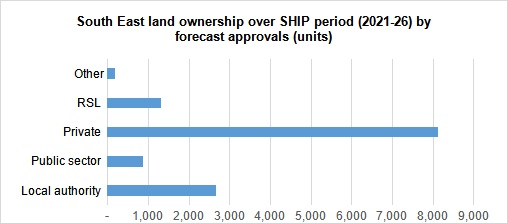Fiona Clandillon: Public and private sectors need to get in step on net zero

Fiona Clandillon
Midlothian Council’s head of development - place Fiona Clandillon argues that the commercial and public sectors need to be brought into greater alignment to ensure emission standards are raised across all homes in Scotland.
Commercial housebuilders have been essential partners in delivering Scotland’s affordable housing supply. Without the homes they build to meet planning obligations, there would be far fewer available at affordable rents in Scotland today. Yet the different pace we are moving to decarbonise our new homes threatens to undermine the relationship between the sectors and our ambition to deliver net zero developments.
Out of Step
In December 2019, Midlothian Council – like many others – declared a climate emergency and committed to make our activities net-zero carbon by 2030. Our aim is for all new homes to be zero emissions homes by 2026, consistent with the Scottish Government’s vision for housing contained in Housing to 2040.
Midlothian Council’s Climate Change Strategy adopted the Passivhaus standard as a design principle for our new homes, while other authorities adopted a Fabric First approach delivering net zero housing developments.
Furthermore, we have stopped installing gas boilers in our new homes, to meet our net zero commitments and avoid the cost of their replacement in the near future. Taking this longer term view is in line with our role as a local authority and a housing authority.
However, house builders’ build-to-sell model means the requirements of building regulations will be met, but not be exceeded. To do so would add extra cost, which would be met by higher prices, which could put individual developers at a competitive disadvantage. The sector must all move together or not at all. As a result, most new homes for sale have an EPC B rating and will have gas boilers for as long as they can be installed.
Impact on Net Zero Affordable Housing
The gap between the sectors would not be an urgent issue were we not reliant on the private sector to provide many of our affordable homes under the terms of their planning consent.
Commercial standard house types are not currently configured to accommodate an enhanced Fabric First specification or alternative heating sources. In acquiring these homes, a housing authority must balance their commitment to zero emission new build homes with the imperative to deliver affordable homes that meet local housing need. Compromise on carbon emissions is hard to avoid.
This issue will become more acute as the supply of surplus council-owned land suitable for housing diminishes and reliance on homes built by the private sector increases. The chart below demonstrates that, in the Edinburgh and South East Scotland region, the vast majority of land supply for affordable homes identified in Strategic Housing Investment Plans (SHIPs) for the next five years is in private sector hands. In Midlothian, over 70% of our forecast supply is from sites not in our ownership.

Source: City of Edinburgh Council / Edinburgh Housing Demonstrator
The sectors need to be brought into greater alignment. The standards the public sector are now working must become across the housing sector via updated building standards. The alternative is slow and incremental climate change mitigation in the housing sector and new build homes built for the public sector that undermine our commitment to address climate change in a meaningful way.
Going Separate Ways
If this does not happen, one alternative is to minimise our relationship with developers. Local authorities could secure serviced land instead of completed homes from the private sector. They could also seek long term, sustainable sources of land from public sector partners.
Securing serviced land results in more control over what gets built, but could push construction costs up with the loss of economies of scale. Also, combining two building programmes on a single site adds further complexity, which can result in delays and further costs.
And while there is scope for a ‘one public sector’ approach to land for affordable housing, this will take time to develop and is unlikely to supply an equal volume of homes we secure through the private sector.
Getting in Step
Our reliance on private sector land and developers to deliver affordable homes is unlikely to disappear. There is an imperative to close the carbon emissions gap if the housing sector is to truly address the climate change challenge. As leaders in the delivery of net zero housing, the affordable sector can take an active role in showing how it’s done.







